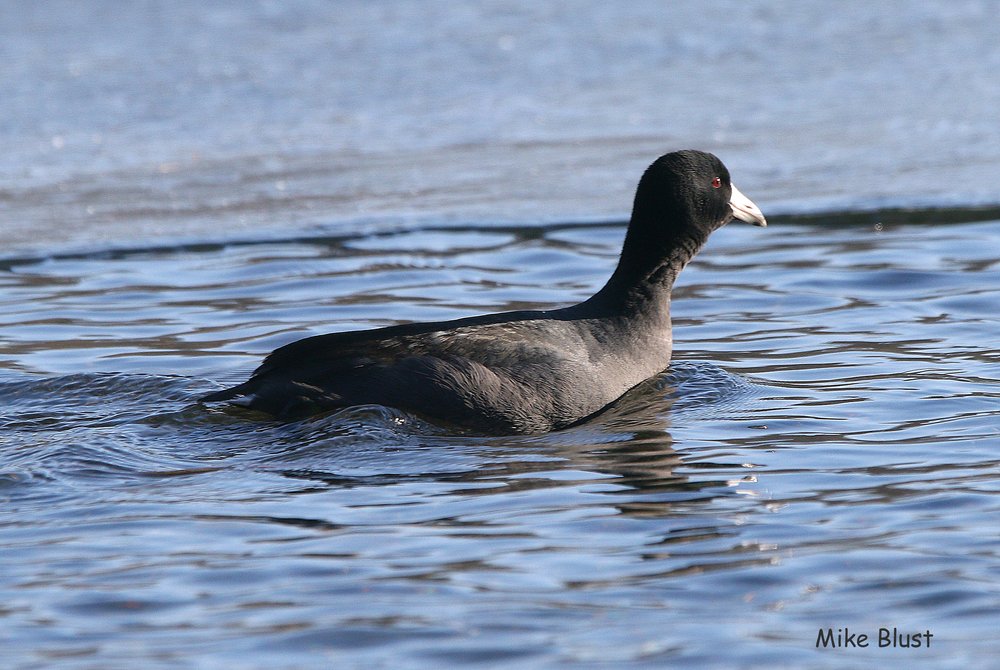 It seems that nearly every season RCAS birders delightedly spy an unusual or rare bird in our area. Last summer, the mid-western Sedge Wren caused a big stir in the meadow off our new Whipple Trail in West Rutland. This winter, an American Coot, or actually two coots, arrived at Lake Bomoseen, making the birding news and causing birders to rush to get a gander at them.
It seems that nearly every season RCAS birders delightedly spy an unusual or rare bird in our area. Last summer, the mid-western Sedge Wren caused a big stir in the meadow off our new Whipple Trail in West Rutland. This winter, an American Coot, or actually two coots, arrived at Lake Bomoseen, making the birding news and causing birders to rush to get a gander at them.
What's a coot and what makes it so special? Although it looks very much like a duck and seems to swim like a duck, it doesn't quack like a duck nor does it fly like a duck. This is because it's not a duck, but a member of the Rallidae or rail and crane family. What you can't see when you're eagerly viewing it through your binocs, is that it has long legs, ending in something resembling flippers, rather than the webbed feet of a duck. Because of these legs, it needs a large expanse of water in which to become airborne.
Coots summer in the northern U.S. from central New York west through the plains’ states and Canada, but are also found year-round in the western and south-central U.S. and into Mexico. There is only one confirmed breeding record in the first Atlas of the Breeding Birds of Vermont - a brood of young seen in Alburg during the first atlas and none found in the second atlas. Interestingly, according to the first Atlas of the Breeding Birds of Vermont, the only pre-atlas record of nesting was in 1904 at Lake Bomoseen. In winter, coots gather in large flocks, called commotions or swarms, where they feed in water-covered rice fields and wetlands and are sometimes being considered a nuisance. In any season they are not common in Vermont.
So, what are these two striking birds with gray bodies, darker heads and white beaks doing on Lake Bomoseen now? We can't be sure but think they somehow became separated from their swarms on their trip south and found shelter here where there is, for this time of year, an unusual amount of open water and enough vegetation on which they can feed to keep them satisfied. They're devouring stems, leaves, seeds, and even algae as they cruise the bays, while we happily gawk at them and snap pictures.
Will they stay all winter? It is unlikely as the lake freezes, they will probably say, ‘coot, coot, coot’ and head to their usual winter havens. We can only hope the coots will remember our waters as they move to their breeding grounds again in spring. Stay tuned or, better yet, get a peek at one or both while you can.
Check out the boardwalk and beach at Bomoseen State Park or watch along the west side of the lake just south of the Kehoe Fishing Access.